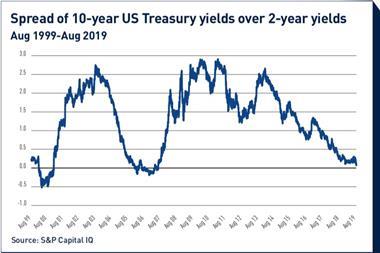Pension fund trustees should review their liability-driven investment (LDI) and government bond strategies as an increasing proportion of the market has a negative yield, according to Cambridge Associates.
The consultancy firm said trustees and others responsible for running pension funds should ensure they understand whether “holding or buying securities that are guaranteed to lose money is consistent with discharging their fiduciary duties”.
Himanshu Chaturvedi, managing director at Cambridge Associates, said trustees should pay particular attention to passive government bond investments, and to LDI strategies.
“Even though falling yields have boosted the value of the bonds that pension funds own today, most pension funds don’t hold enough of these assets,” Chaturvedi said. “Higher prices are putting these assets out of reach and hurting funding levels.”
Roughly a quarter of the investment grade bond universe – equivalent to approximately $15trn (€13.7trn) – was producing negative yields, he said.
The yield on a 10-year UK Gilt has fallen dramatically in 2019, from 1.28% on 1 January to 0.48% on 30 August, according to Bloomberg.
German 10-year Bunds reached a negative yield in March this year and were yielding -0.7% at the close of trading on 30 August, compared to 0.24% at the start of the year.
Chaturvedi said trustees “may need to take several steps to ensure that their investment strategy does not straitjacket them into holding these bonds”. These steps included reviewing how liabilities were valued and how LDI strategies coped with negative-yielding assets.
“Trustees should be prepared to actively reduce their holdings of government bonds to lock in profits if yields turn negative,” he added. “In such a scenario, positive-yielding bonds issued by high quality corporates may represent lower risk of capital loss than government bonds.”
Last month the largest sovereign wealth fund, Norway’s Government Pension Fund Global, reported that it held more than NOK600bn (€60bn) in fixed income assets with a negative real yield, once inflation was taken into account.










No comments yet